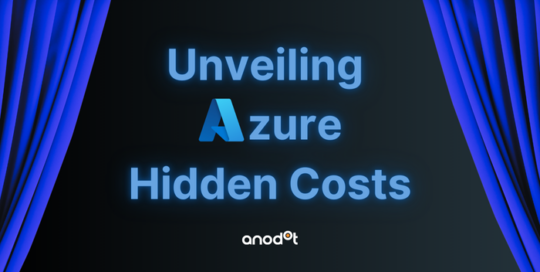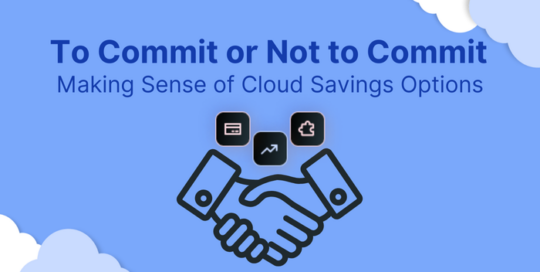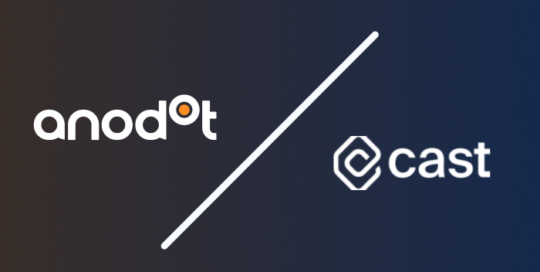Trying to refine your org structure and already using VMware Tanzu CloudHealth? You might have stumbled across the word FlexOrgs. If you have, you’re likely scratching your head and wondering what FlexOrgs are and, more importantly, if they can help you.
Still unsure how to get started? Don’t worry. We have the answers to your FlexOrg questions (and more!). Our FlexOrgs in a nutshell guide should give you an idea of what to expect and see if it’s the right choice for your cloud environment.
Table of Contents
What Are FlexOrgs?
FlexOrgs is a VMware Tanzu CloudHealth-specific feature that helps manage user access, sharing, and delegation across your organization’s hierarchy.
The following are some of the key components of FlexOrgs:
- Role Documents: These documents define user permissions within certain platforms (ex: view-only, edit, or create).
- Organizational Units (OUs): Each OU gets its assigned cloud infrastructure resources, representing different parts of your organization (e.g., teams, business units, etc.).
- Users: Anyone who has access to your Tanzu CloudHealth platform.
- User Groups: Multiple users who have similar OU responsibilities. User groups help define FlexOrg relationships.
For example, here’s a breakdown of how you can build out your hierarchy with a TLOU (Top-Level Organizational Unit) and other hierarchical child OUs:
How Do FlexOrgs Work?
If you’re looking to build out or optimize a pre-existing FlexOrg, you’ll want to follow these steps:
- Determine who belongs where in your organizational units (OUs), role documents, and user groups.
Ask yourself who fits where and who needs what levels of permissions. Consider how many tiers your organization requires and how you should define each tier. Keep in mind things like security (who should have access to what documents), and visibility (who needs access to what documents). - Determine where you want to pull your data.
If you’re using a CSP, review your platform of choice. AWS, Azure, and GCP all have the ability to build an organizational structure, so make sure you’re not duplicating someone else’s work. If you’re using an IDP or an SSO service, you can recreate that structure in Tanzu CloudHealth and simplify things. - Review your account, subscriptions, and projects.
Make sure you’re familiar with your assignment strategy. Accounts and users should flow much smoother via FlexOrg’s organizational hierarchy. - Consider your organization’s goals.
Make sure you’re clear on what your organization is trying to accomplish. Do you want better delegation, user visibility, or security? These should inform how you build your FlexOrg. - Assign cloud resources.
Next, you’ll want to assign your cloud resources (like your GCP or AWS accounts) to your OUs. - Create user groups and assign role documents and permissions.
Final step! Create your user groups and use your brainstorming from step one to assign users. You should assign permissions based on your role documents.
Drawbacks of using FinOrgs
While VMware Tanzu CloudHealth’s FinOrgs feature simplifies cloud structure and tag organization, it’s not as flexible as some other tools on the market.
Limitations include:
- Perspective Building: To view tags in cost reports, you must construct a Perspective. However, these mappings may take up to 24 hours to load fully.
- Restricted Scope: Perspectives can be built using only tags, resources, accounts, and specific services.
- Separate Systems: Business Mapping and Cost Allocation are managed in different sections, adding layers of complexity.
For MSPs and Enterprises needing to respond promptly to cloud environment changes, slow load times and multitasking with tags and allocation could raise manual workload, which is not ideal in a FinOps organization.
Why You Should Migrate from CloudHealth to Anodot
| Feature | CloudHealth | Anodot |
| Supported Infrastructures | VMware, AWS, Azure, Google Cloud, K8s, Alibaba, OCI | AWS, Azure, Google Cloud, K8s |
| Virtual Tagging, Cost Categorization, and Cost Allocation | Preconfigured, customization reporting for each persona | Preconfigured, customizable reporting for each persona |
| FinOps Culture and Root Cause Analysis | Builds your FinOps culture and enables drill-in root cause analysis |
Builds your FinOps culture and enables drill-in root cause analysis
|
| Showback and Chargeback | Yes | Yes |
| Rightsizing | Savings recommendations Very few basic recommendations across primary services, automatable, savings projections, inaccurate, and inflated. |
Reduce waste and maximize utilization with 40+ savings recommendations highly personalized to your business and infrastructure
|
| Forecasting and Budgeting | Inaccurate forecasts frustrate many customers |
AI-driven forecasting ensures high-certainty predictions at various levels of detail
|
| Anomaly Detection and Management | Set up email alerts for detecting deviations from historical trends. No distinction between noise and impact activity |
Fully-automated AI not only detects anomalies in real-time but the root cause as well. Feature alerts the appropriate teams prompting quick response and resolution
|
| Extensibility | Multiple fractured APIs hinder data accessibility | Single, robust, easy-to-use API |
| Ease of Use | Not user friendly or instinctive interface | Intuitive and responsive display |
| Pricing | Unpredictable pricing taxes customers at 3% of cloud spend, offered at low cost by MSPs | Single, robust, easy-to-use API |
| Company Status | CloudHealth Technologies was acquired by VMware in August 2018. Then, Broadcom acquired VMware in November 2023, resulting in delays to product development and innovation for its users |
Anodot has recently doubled the size of the team supporting our FinOps product, MSPs, and publishes a public-facing roadmap that promises rapid innovation
|
Good news – if you need a tool similar to FinOrgs but require flexibility and agility to respond in a fast-paced cloud infrastructure, Anodot’s Cloud Center is designed for FinOps organizations aiming to lessen admin overhead and automate processes.
Anodot’s Cloud Center: A More Comprehensive Solution
Anodot’s Cloud Center offers a more comprehensive and flexible approach to cloud cost management compared to FlexOrgs. It provides a unified platform for visualizing and analyzing your cloud costs, enabling you to gain deeper insights and make data-driven decisions.
Key Advantages of Cloud Center:
- Unified View: Easily visualize your cloud costs across different departments, teams, or lines of business.
- Automated Filtering: Automatically filter data based on your selected view, providing tailored insights for each group.
- Enhanced Flexibility: Enjoy greater flexibility in creating and organizing cost categories compared to FlexOrgs.
- Integration with Existing Tools: Seamlessly integrate Cloud Center with your existing cloud infrastructure and tools.
- Scalability: Easily scale Cloud Center to accommodate your growing organization and cloud resource needs.
How Cloud Center Works
Cloud Center leverages advanced analytics and machine learning to provide actionable insights into your cloud costs. By mapping your organizational structure to your cloud resources, you can:
- Identify cost-optimization opportunities: Pinpoint areas where you can reduce spending without compromising performance.
- Allocate costs accurately: Ensure that costs are allocated fairly across different departments or teams.
- Track usage trends: Monitor your cloud usage patterns to identify anomalies and optimize resource allocation.
Why Choose Anodot?
- Comprehensive Solution: Anodot offers a comprehensive suite of FinOps tools, including cost optimization, anomaly detection, and user access control.
- Scalability: Easily scale Anodot to accommodate your growing organization and cloud resource needs.
- Flexibility: Anodot’s flexible approach allows you to adapt to changing business requirements.
- Expert Support: Benefit from Anodot’s team of FinOps experts who can provide guidance and support.
Conclusion
If you’re looking for a more powerful and flexible solution to manage your cloud costs, Anodot’s Cloud Center is the answer. By providing a unified view, automated filtering, and enhanced flexibility, Cloud Center empowers you to make data-driven decisions and optimize your cloud spending.
It’s Time to Upgrade from FinOrgs to a Flexible Cloud Center
FlexOrgs is a great start when your organization is still trying to define roles and permissions in the cloud, but if you’ve mastered hierarchy and are ready to move on to cloud cost optimization, cost anomaly detection, and user access control specifically for cost data, Anodot is for you.
Curious about Anodot and the services we offer? Talk to us to learn how much you can save with Anodot’s tools.





